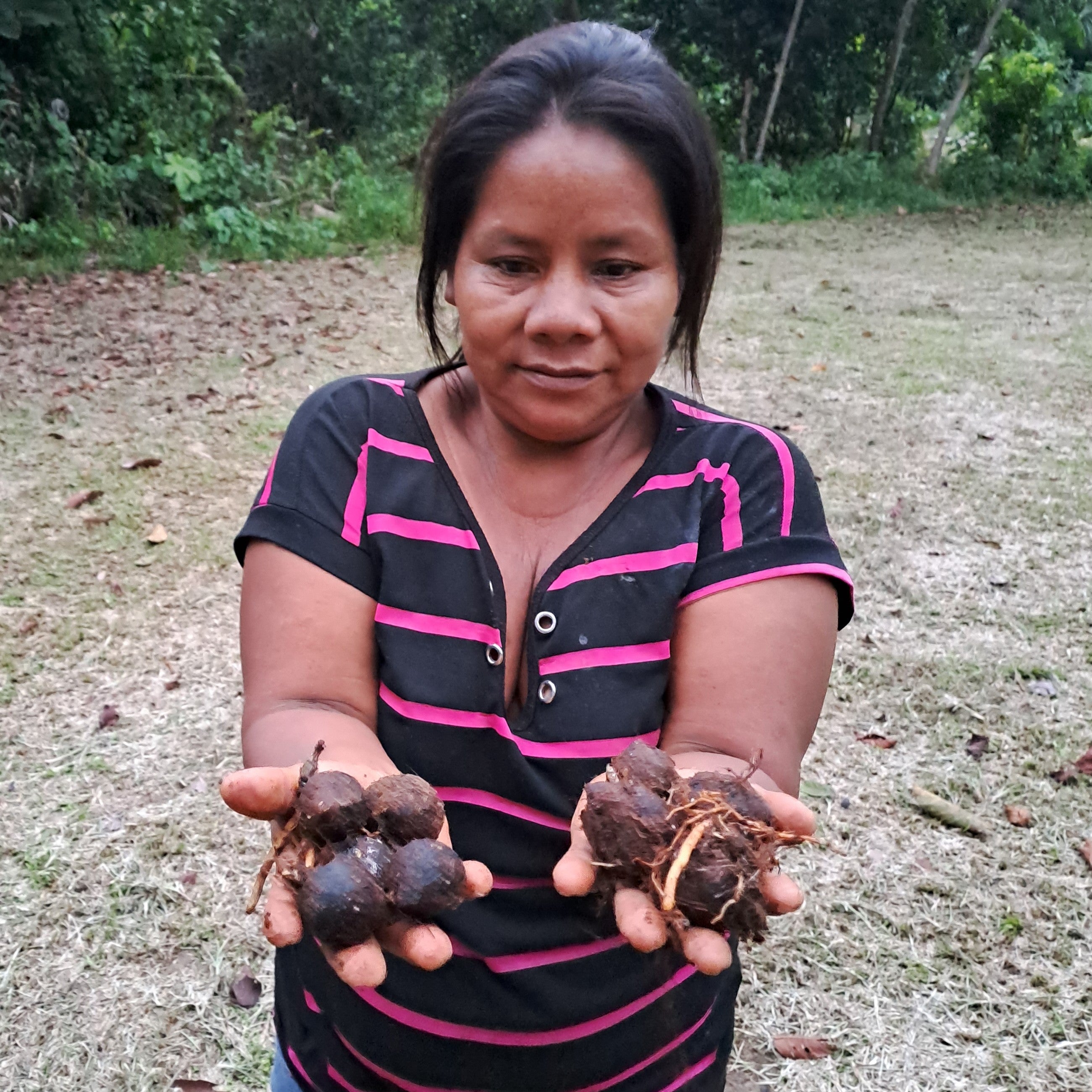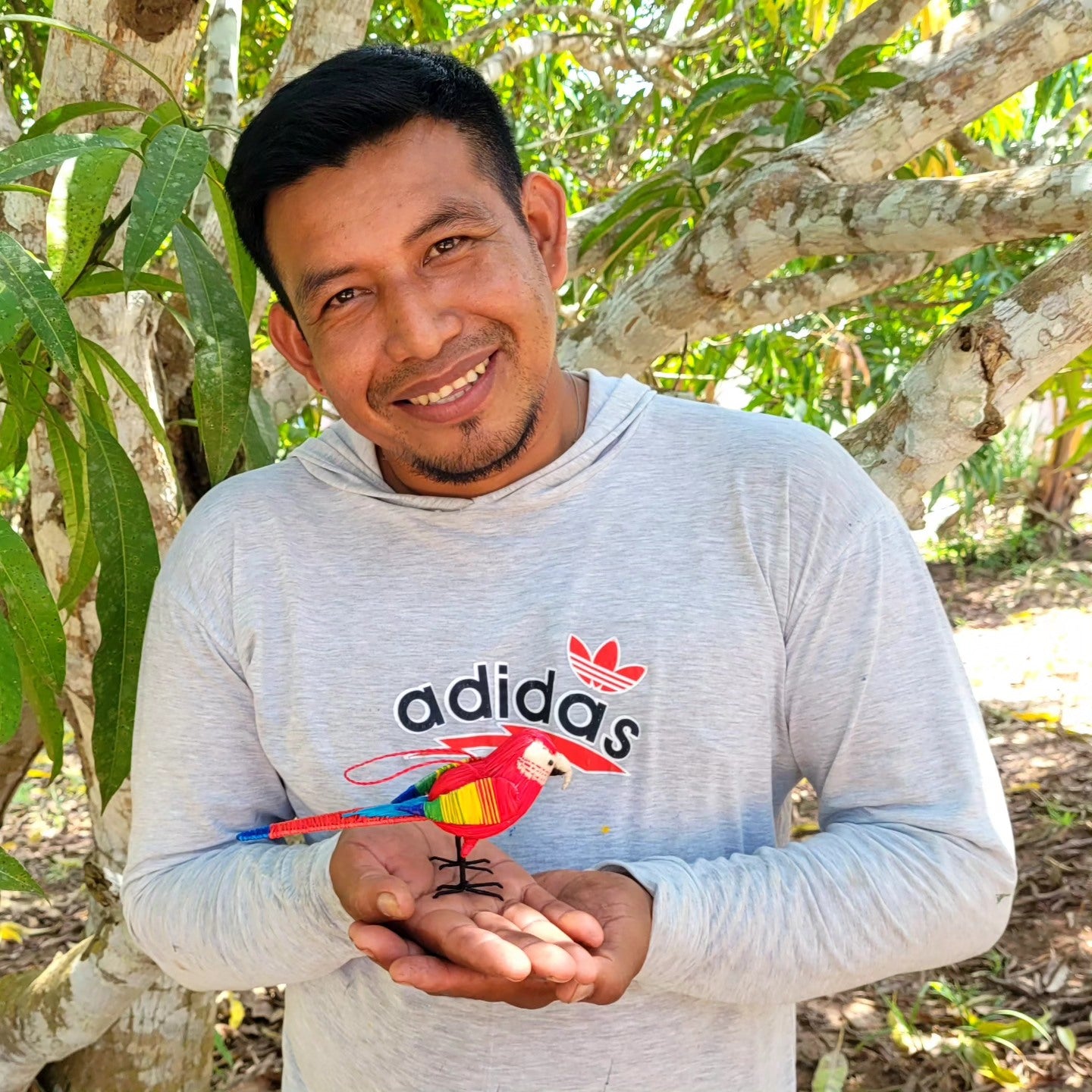My most recent trip to the Bora native community of Brillo Nuevo was memorable for several reasons. It took us longer than usual to get there because various boats had to travel more cautiously since another severe dry season had lowered river levels and exposed sand banks and hazardous sunken trees.

We started our artisan organization building workshop on a Friday and appreciated the enthusiastic participation in in the morning session. The first activity involved cooperation between three small groups which each took a turn advancing the construction of a creation started by the previous group. We next explained the concept of a SWAT (Strengths, Weaknesses, Opportunities, and Threats) analysis and asked participants to share examples of each feature based on their experiences.

In the third task, one person got to see a cartoon picture of a tree and then guide them one or two people to draw that figure as closely as possible using only their spoken words. It was a great lesson in the elements of clear communication.

We broke at noon for lunch. While we were eating, the woman who prepared our meal was looking down to the river and saw a man swimming out to catch his canoe that had drifted away from the bank. He flailed about a bit and then went down. The cook loudly called out in a panic to people outside to try and save him. They reacted quickly, but no one could find him in the brown water before it was too late. We knew right away that our workshop was not going to continue that afternoon.
The would-be rescuers dove down over and over to the point of exhaustion to recover “Juan’s” body since his leg or pants were snagged on an underwater branch. The ordeal was extended when they finally dislodged him only to have his body travel farther down river before they finally retrieved it a few hours later.
There are no funeral businesses in Amazon villages. “Juan” was an elderly man who quietly went about his life without immediate family. The community council then did what needed to be done. One man came to our house to ask if we had any candles (for the wake), nails (to build the coffin) or food for the events that would follow. Such supplies were in short supply since the only village general store ("bodega") closed when its owner (who was Juan's niece) moved to the city.

Later that afternoon I returned to the community building (the “locale”) where our workshop had begun that morning and saw Juan's body wrapped in a blanket on a table. I had not known him personally, but I felt called to sit with him in silence for a while and briefly hold his shoulder to say goodbye.
The sounds of sawing and banging later that evening indicated that the construction of Juan's coffin was underway. Our team kept to ourselves in our house and went to bed.
I woke up around 3:30 am to the sounds of singing. While I was groggy, I finally realized I wasn't going to get back to sleep. I got dressed and went to the “locale” assuming I would find people engaged in singing hymns. What I found, however, was a group of adults and children merrily dancing around. I sat outside on a bench, and the fellow next to me told me there were certain games that were only played at wakes ("velorios") to help people cope with the deep sadness that accompanies the loss of someone from their community.

While my intent was just to be a respectful observer, the man leading these games eventually came over to me and pulled me up to join them. I was the next to last person to go out in version of Simon says and then led two fun “Light and Lively” activities from the Alternatives to Violence Project (AVP). I went back to bed just as the sun was coming up.

I am happy to report that our second organization building workshop of the trip with artisans from Puca Urquillo went very well from start to finish. Several hours before we left the town of Pebas to return to Iquitos, though, there was a knock on my hotel room door. Angelina, an artisan from Brillo Nuevo, told me that her mother Ernestina had just passed away and asked if we could contribute to her funeral expenses. Ernestina who was already an elderly artisan when I first visited Brillo Nuevo in 2008 so she had lived a long life to an age that no one exactly knew. She had come to the Ampiyacu region in Peru as a girl when her parents had escaped being slave-like workers in a rubber plantation in Colombia. She grew up learning to make crafts and then taught her children. We could barely communicate with words because she spoke very little Spanish, and I knew no Bora, but I appreciated her laugh and she seemed to appreciate my smile. For the second time in a week, I attended a wake for a resident of Brillo Nuevo.





